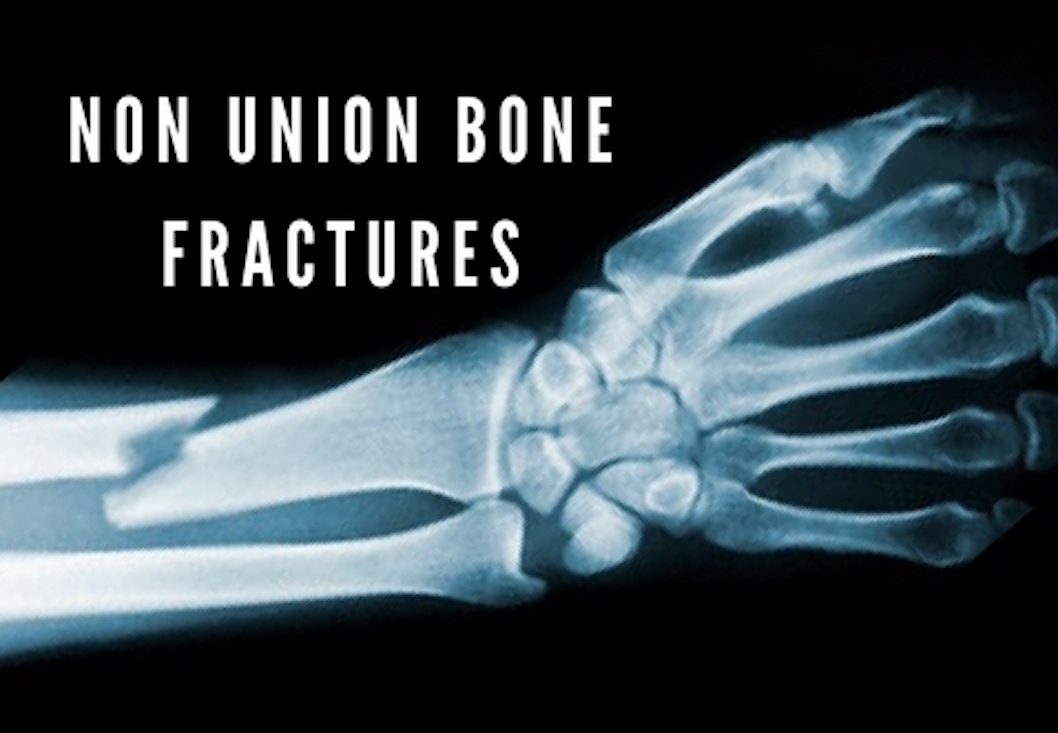Non Union Bone Fractures

Bone fractures are not uncommon. In most cases, they are a minor inconvenience and are eventually fully healed. In rare cases, however, the broken bone does not heal with typical treatments. This is referred to as a non-union bone fracture, and can cause pain and disability on a long-term scale, drastically reducing quality of life.
In normal healing, ruptured vessels leak blood into the gap caused by the fracture forming a hematoma, or clotted mass. At this stage, physicians ensure the bones are aligned properly, and over the next couple weeks, the hematoma transforms into a network of cartilage and connective tissue. Eventually, osteoblasts and blood vessels make their way through this matrix. Over time, the soft tissues are transformed into hard bone, fully healing the fracture.
When the blood supply gets cut off, however, the normal healing process fails, depriving the fracture site of the cells and resources necessary for healing. The current treatment for non-union bone fractures is surgery, which helps reinforce the affected area by inserting a bone graft. Bone grafting is possible because bone tissue, unlike most other tissues, has the ability to regenerate completely if provided the space into which to grow. As native bone grows, it will generally replace the graft material completely, resulting in a fully integrated region of new bone.
Regenerative medicine might give physicians a new way of reconnecting the blood supply to the fracture site. Scientists hope they can kick start the normal healing process by encouraging new blood vessels to grow into the gap. To do this, researchers harvest the population of a patients’ cells with a surface marker called Cd34. Included in these cells are Endothelial Progenitor Cells, or EPCs, which promote blood vessel growth. Once isolated, the EPCs are infused into a gel, which is then inserted into the fracture site, along with a small bone graft. The EPCs not only encourage new blood vessels to grow, but can also turn into the cells that make up blood vessels. Together, the bone graft and the gel provide all the cell types necessary for healing.
Currently, there are ongoing clinical trials in Japan to test whether this type of cell therapy can help patients with Non-Union bone fractures.
Check out the full article and infograph from Nature below!
https://www.nature.com/articles/550S194a